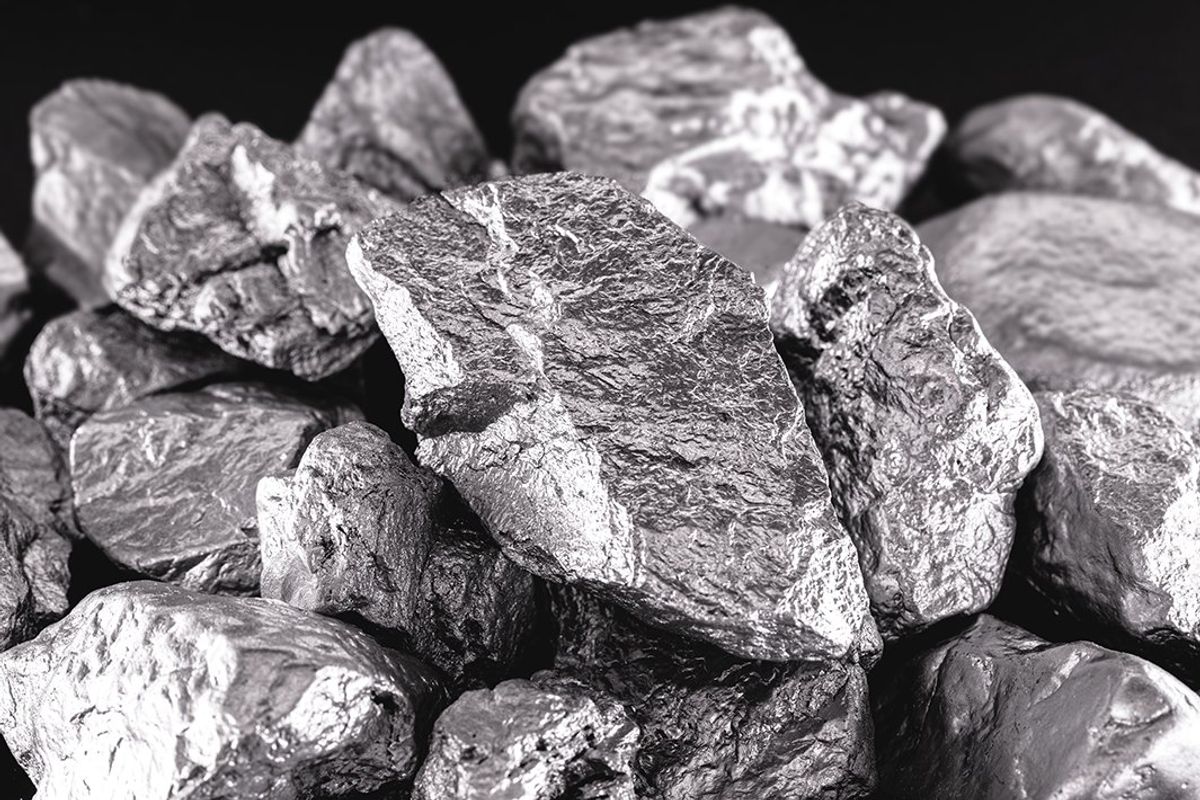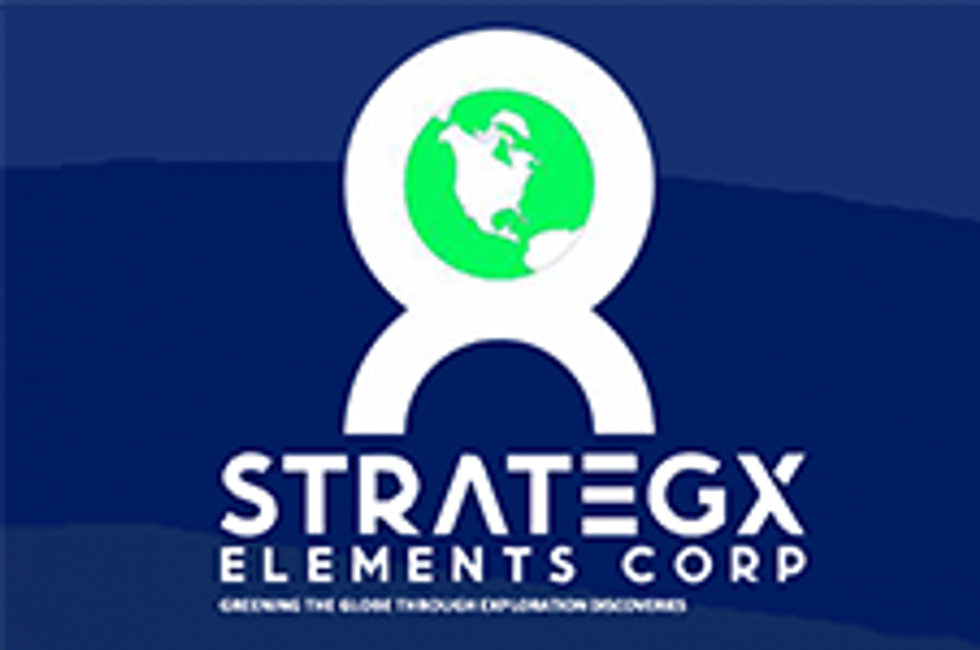- AustraliaNorth AmericaWorld
Investing News NetworkYour trusted source for investing success
- Lithium Outlook
- Oil and Gas Outlook
- Gold Outlook Report
- Uranium Outlook
- Rare Earths Outlook
- All Outlook Reports
- Top Generative AI Stocks
- Top EV Stocks
- Biggest AI Companies
- Biggest Blockchain Stocks
- Biggest Cryptocurrency-mining Stocks
- Biggest Cybersecurity Companies
- Biggest Robotics Companies
- Biggest Social Media Companies
- Biggest Technology ETFs
- Artificial Intellgience ETFs
- Robotics ETFs
- Canadian Cryptocurrency ETFs
- Artificial Intelligence Outlook
- EV Outlook
- Cleantech Outlook
- Crypto Outlook
- Tech Outlook
- All Market Outlook Reports
- Cannabis Weekly Round-Up
- Top Alzheimer's Treatment Stocks
- Top Biotech Stocks
- Top Plant-based Food Stocks
- Biggest Cannabis Stocks
- Biggest Pharma Stocks
- Longevity Stocks to Watch
- Psychedelics Stocks to Watch
- Top Cobalt Stocks
- Small Biotech ETFs to Watch
- Top Life Science ETFs
- Biggest Pharmaceutical ETFs
- Life Science Outlook
- Biotech Outlook
- Cannabis Outlook
- Pharma Outlook
- Psychedelics Outlook
- All Market Outlook Reports
Canada's Role in Diversifying the Global Cobalt Supply

Cobalt is a critical battery metal, and creating a stable and secure global supply chain for it is key to a sustainable future.
Global cobalt supply remains dominated by the Democratic Republic of Congo (DRC), which produces more than 70 percent of the world's supply. As demand for cobalt and other battery metals continues to increase in the transition to decarbonization and clean energy, the need to diversify the global cobalt supply chain has never been more critical.
Cobalt resources in more stable jurisdictions like Canada present an opportunity for the resource sector to influence the trajectory of the cobalt supply chain. They also allow investors to take advantage of cobalt production in a more sustainable fashion.
Though these jurisdictions may not possess the same abundant cobalt reserves as the DRC, they possess many clear advantages over the region from both a mining and investment perspective — especially Canada.
Uneven supply, mounting demand
Cobalt is arguably among the most critical battery metals currently in production. The element was already in high demand even prior to the push for net-zero, used in everything from rechargeable batteries to superalloys in jet turbines. According to the International Energy Association, global cobalt production will need to triple by 2030 and quintuple by 2040 just to keep pace with the increased demand. This will require the construction of new mines and the discovery of new deposits. Yet new infrastructure alone will likely not solve the issue fully.
As any investor worth their salt will tell you, diversification is the key to success. Unfortunately, the global cobalt supply chain is anything but diverse, with the DRC accounting for about 70 percent of the world’s production. Any form of destabilization in the region could prove catastrophic to the supply chain. And given that the Fraser Institute's 2021 annual survey of mining companies ranks the DRC near the bottom in policy and investment attractiveness, such risk is not entirely improbable.
This is not the only investment concern presented by the region. Much of the DRC's cobalt production stems from artisanal and small-scale mining operations — and most of these are unregulated and are operating without worker protections or safety standards. Humanitarian concerns are distressingly common, and conflict between mining factions is a regular occurrence.
Unsurprisingly, these operations often occur without regard for their environmental costs. These include extensive pollution, chemicals that leach into water sources and hazardous cobalt dust affecting the surrounding communities. Scientists have also noted that many mining regions in the southern DRC display high levels of radioactivity due to the presence of uranium deposits.
Between the human rights issues and the environmental concerns, the DRC's cobalt supply presents an enormous liability for both investors and brands — to say nothing of its impact on the overall pursuit towards sustainability.
Untapped opportunities in Canadian cobalt
Although currently the fourth largest global producer of cobalt, Canada's contribution pales in comparison to the DRC's, representing roughly 2 percent of global supply. Cobalt production in Canada is largely concentrated in Ontario, Quebec and Newfoundland and Labrador.
Canada's cobalt reserves are admittedly modest compared to those in the DRC. However, Canada’s pre-existing infrastructure and stable regulatory climate represent a considerable advantage. It's also important to note that the majority of Canadian cobalt production is a by-product of nickel and copper mining.
According to Mining Technology, the Voisey's Bay mine, the Raglan mines and the Sudbury Area mine are among the only operating cobalt mines of note. The first, situated in Newfoundland and Labrador, is owned and operated by Vale Canada. It produces roughly 2,000 MT of saleable cobalt per year.
The latter two mines are both owned and operated by Glencore (LSE:GLEN,OTC Pink:GLCNF). The Raglan Mines are situated in Quebec and the Sudbury Area Mines are in Ontario. Together, they produce 1,100 MT of cobalt per year.
Canada ranks seventh in the world for cobalt reserves, with an estimated 220,000 MT. Much of this mineral wealth remains untapped. Thanks to recent developments in cobalt mining and exploration, this may soon change.
Canada's most promising cobalt projects
There are several notable cobalt projects in various stages of development — and all of them show promise from an investment standpoint.
High-Tech Metals’ (ASX:HTM) Werner Lake cobalt project, for instance, has already seen extensive exploration and development work. Situated near the Ontario-Manitoba border, the area in which the project is based hosts extensive pre-existing infrastructure from historic cobalt mining operations. Werner Lake consists of two distinct deposits — the Old Mine deposit and the West Cobalt deposit.
Already in its advanced stages, the project contains an estimated resource of 720,000 pounds at 0.51 percent cobalt.
Global Energy Metals (TSXV:GEMC,OTCQB:GBLEF) is a major player in Canada's cobalt mining sector. In addition to being the original owner of the Werner Lake cobalt project, it also owns and operates the early-stage Chance Lake and Amiral nickel-copper-cobalt projects, which are both situated in Quebec and together cover roughly 2,900 hectares.
Canada Silver Cobalt Works (TSXV:CCW,OTCQB:CCWOF) is another company worth mentioning. The company's flagship project, Castle East Silver, is currently in its advanced exploration stages. Said project includes both a previously producing mine and an incredibly high-grade silver-cobalt deposit.
Other promising projects include Fortune Minerals' (TSX:FT,OTCQB:FTMDF) NICO project, GIGA Metals' (TSXV:GIGA,OTCQX:HNCKF) Turnagain project, Stratabound Minerals' (TSXV:SB,OTCQB:SBMIF) Captain Project and Nova Royalty's (TSXV:NOVR,OTCQB:NOVRF) Dumont project.
Takeaway
Global demand for cobalt will only increase in the coming years and our current supply chain simply cannot keep up. To keep cobalt production both stable and sustainable, we need to diversify and shift from an overreliance on the DRC. Jurisdictions like Canada present a golden opportunity to do so — and a valuable investment target, as well.
This INNSpired article is sponsored by High-Tech Metals (ASX:HTM).This INNSpired article provides information which was sourced by the Investing News Network (INN) and approved by High-Tech Metalsin order to help investors learn more about the company. High-Tech Metals is a client of INN. The company’s campaign fees pay for INN to create and update this INNSpired article.
This INNSpired article was written according to INN editorial standards to educate investors.
INN does not provide investment advice and the information on this profile should not be considered a recommendation to buy or sell any security. INN does not endorse or recommend the business, products, services or securities of any company profiled.
The information contained here is for information purposes only and is not to be construed as an offer or solicitation for the sale or purchase of securities. Readers should conduct their own research for all information publicly available concerning the company. Prior to making any investment decision, it is recommended that readers consult directly with High-Tech Metalsand seek advice from a qualified investment advisor.

High-Tech Metals Investor Kit
- Corporate info
- Insights
- Growth strategies
- Upcoming projects
GET YOUR FREE INVESTOR KIT

High-Tech Metals Investor Kit
- Corporate info
- Insights
- Growth strategies
- Upcoming projects
GET YOUR FREE INVESTOR KIT
Outlook Reports
Featured Resource Investing News Stocks
Browse Companies
MARKETS
COMMODITIES
| Commodities | |||
|---|---|---|---|
| Gold | 2334.53 | +3.88 | |
| Silver | 27.48 | +0.13 | |
| Copper | 4.59 | +0.05 | |
| Oil | 83.85 | +0.28 | |
| Heating Oil | 2.57 | +0.01 | |
| Natural Gas | 1.56 | -0.08 | |
Investing News Network websites or approved third-party tools use cookies. Please refer to the cookie policy for collected data, privacy and GDPR compliance. By continuing to browse the site, you agree to our use of cookies.


